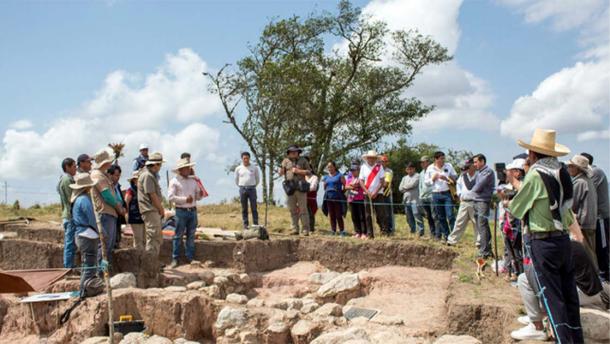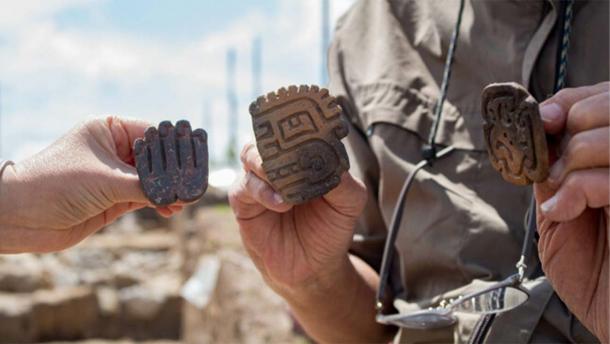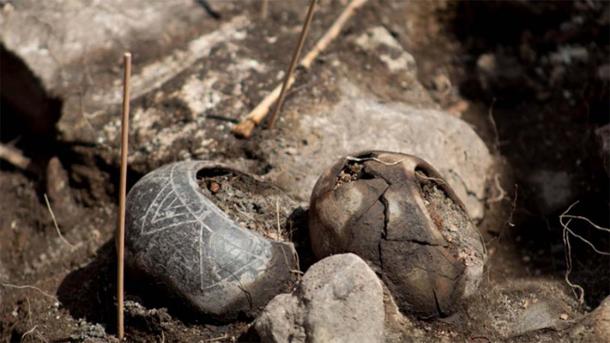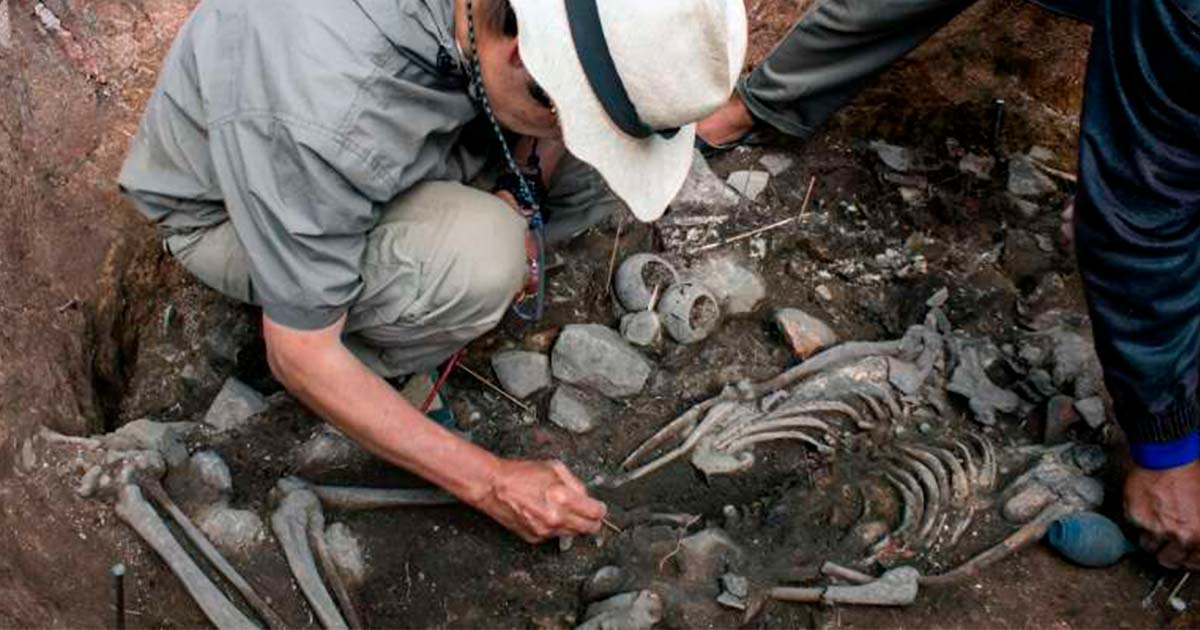A team of archaeologists from Peru and Japan have discovered a circular grave in northern Peru that is approximately 3,000 years old, and maybe even older. The Pacopampa tomb and burial site contained the body of an ancient priest, along with several ceremonial items that were buried with him to aid his transition to the next world.
“We have recently discovered the tomb of a 3,000-year-old figure at the Pacopampa archaeological site,” Peruvian archaeologist Juan Pablo Villanueva told the news service AFP. “He is one of the first priests in the Andes to have a series of offerings… the funerary context is intact.”
As of now, the site of the new discovery has been named “The Tomb of the Priest from 3,000 Years Before the Present,” according to a press release by Peru’s Ministry of Culture. Perhaps a shorter and catchier name will be chosen eventually, but for now this is how archaeologists are referring to the Pacopampa tomb which was used to bury a religious leader who was apparently highly regarded by his people.

The archaeological site where the Pacopampa tomb was unearthed in Peru. (Peru’s Ministry of Culture)
The Pacopampa Tomb and a Priest’s Elaborate Burial
The Pacopampa archaeological site—home to the Pacopampa tomb—is located in the Cajamarca region of the Peruvian Andes in the province of Chota, 560 miles (900 km) to the north of Lima. It is linked to the pre-Incan Pacopampa culture that thrived in the area between 1,200 and 500 BC.
The Pacopampa tomb that contained the body was perfectly circular and measured 10 feet (3 m) in diameter. The grave was shallow, having been dug to a depth of only 3.3 feet (1 m). There were six layers of ash and dirt covering the body and the funerary objects that had been placed in the grave, which protected them quite effectively against decay.
The skeleton of the ancient priest discovered within the Pacopampa tomb was intact. It was laid with its head facing south and feet crossed and pointing north. Strangely, the priest was buried face down, for reasons that seem destined to remain unknown.

Artifacts excavated within the Pacopampa tomb in Peru. (Peru’s Ministry of Culture)
Artifacts Uncovered within the Pacopampa Tomb
Near the body on the western side of the Pacopampa tomb were several small, sphere-shaped ceramic bowls, some of which were decorated. The archaeologists also unearthed a carved bone spatula and a few other assorted offerings at the site, including a pair of bowls with decorations that would have been used as seals.
There were two other seals discovered—one that featured the face of a jaguar and the other a human-like face—along the edge of the tomb in the upper levels of the ash-and-soil fill. These seals would have been used to stamp images onto the painted body of the priest, signifying his status as a revered and important leader in his ancient community.
“The find is extremely important because he is one of the first priests to begin to control the temples in the country’s northern Andes,” Japanese archaeologist and expedition leader Yujo Seki explained. Current estimates are that this priest lived around 1,000 BC.
Interestingly, this is not the oldest body of a priest found at the Pacopampa site. In September of 2022, the same archaeologists unearthed another tomb that contained the body of a religious leader, who it is estimated lived in 1,200 BC or earlier. This individual was named the “Priest of the Pututos,” after an Andean wind instrument made from empty seashells that can make loud trumpet-like sounds. Several pututos were buried alongside the priest, suggesting he might have used them during services or ceremonies.

Ceramic bowls were discovered within the Pacopampa tomb in Peru. (Peru’s Ministry of Culture)
The Spiritual Beliefs of the Pacopampa People Exposed
The Pacopampa site in the Cajamarca region is located high up in the Andes mountains, at an altitude of 8,200 feet (2,500 m). Nine monumental buildings made from carved and polished stone have been discovered at this site. These structures are thought to constitute one part of a larger religious complex.
In addition to the buildings and the tombs of the recently discovered priests, excavations have uncovered three other burials of venerated religious figures. The first of these bodies was labeled “The Lady of Pacopampa.” Based on an analysis of her skeletal remains the woman was estimated to have been between the ages of 30 and 40 when she died. She was buried with a rich collection of grave goods including gold earrings, ceramic pots and seashell necklaces. It seems she was buried around 900 BC, in the area where a ceremonial temple was soon to be constructed.
The other two bodies were unearthed in 2015, from a perfectly intact tomb that remained untouched by tomb robbers or artifact thieves—a constant concern at the Pacopampa site. Both individuals were priests and their adornment was quite eye-catching. One was buried wearing a heavy golden necklace, while the other was entombed along with a black ceramic bottle that featured an engraved figure with the body of a serpent and the head of a jaguar.
Based on the latter discovery, the burial site was named “The Tomb of the Serpent-Jaguar Priests.” It is believed the individuals found there lived sometime later than the other priests, between 600 and 700 BC. So, it seems the cult or sect that built the religious complex was active there for many centuries.
All of these discoveries, including the circular tomb of the priest unearthed during the 2023 excavation season, occurred under the auspices of the Pacopampa Archaeological Project. Launched in 2005, this ongoing investigation is designed to find out as much as possible about the Pacopampa culture that dominated this region of Peru 2,500 years ago and before. Archaeologists from the National Museum of Ethnology in Japan and from Peru’s National University of San Marcos have participated in the Pacopampa Archaeological Project, which will celebrate its 20th excavation season in 2024.
The recent discoveries have revealed fascinating details about the religious and ceremonial practices of the Pacopampa people. The contents of the various tombs show the Pacopampa culture was defined in part by a rich spiritual tradition that motivated them to construct monumental temples and arrange for elaborate ritual burials to help their deceased religious leaders make a successful transition to the other side.






